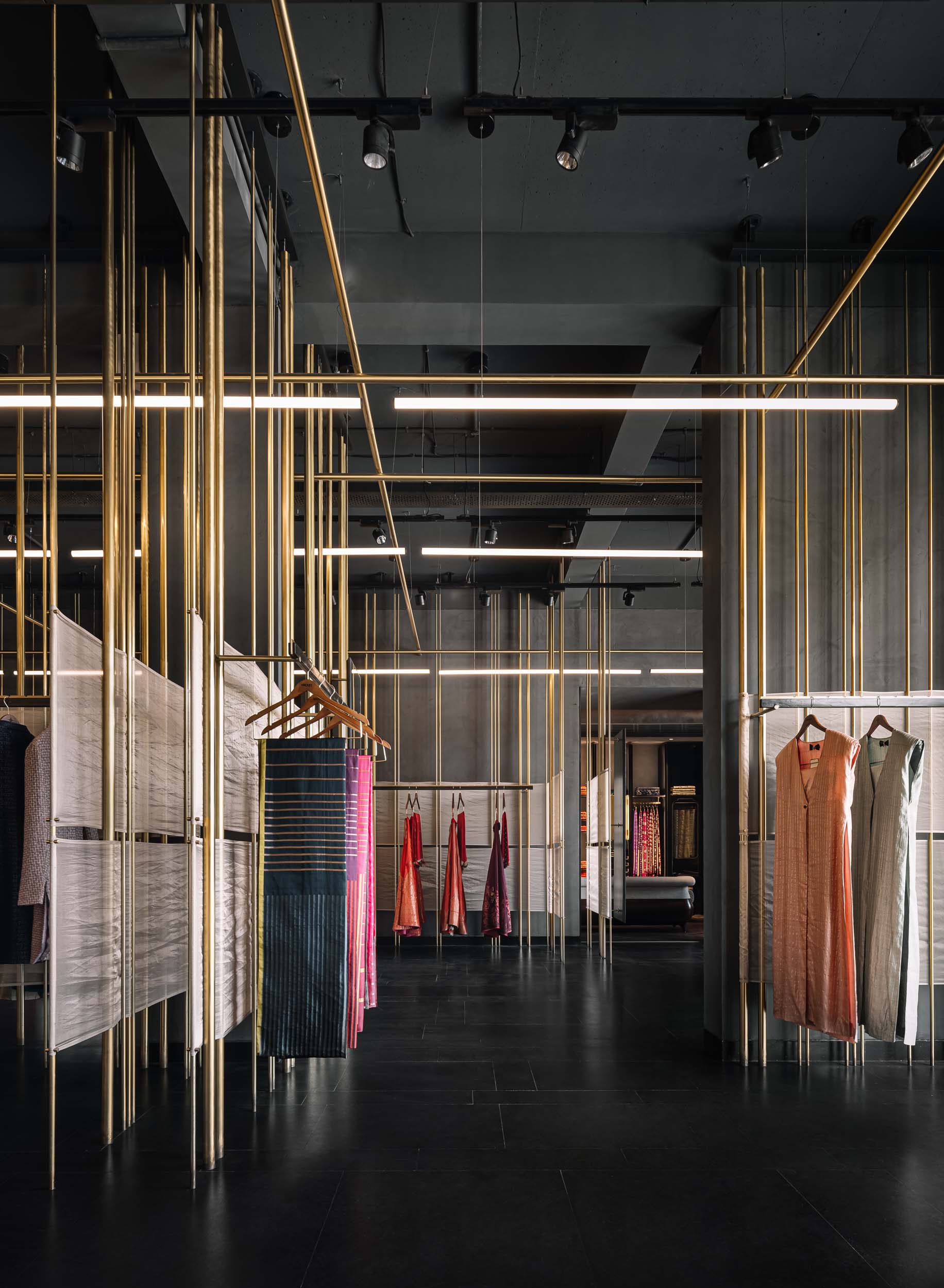The Banarasi saree is a traditional fashion garment found in India that dates back to the Mughal era of the 1500s. The style is still admired for its intricate patterns and impeccable craftsmanship that involves a complex, handmade process using handlooms and weaving silk threads. One can find this type of saree at India’s first handloom luxury brand, Ekaya, which has been producing Banarasi textiles for over 100 years. Ekaya tapped New Delhi–based Studio Lotus and Studio GreyMatter for an expansion of its boutique in Ahmedabad, located in India’s western state of Guajarat.
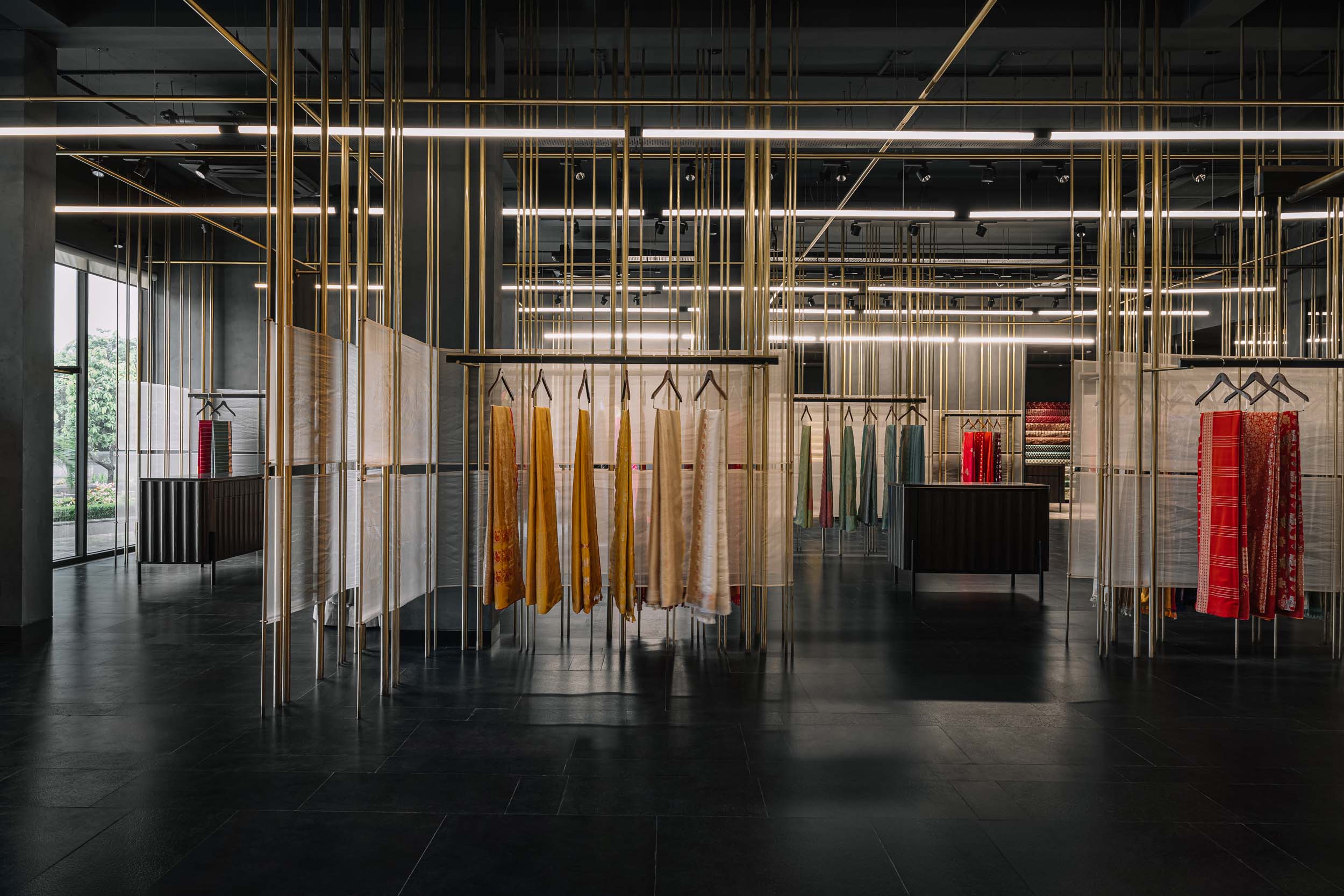
The new 12,500-square-foot retail space incorporates elements from traditional weaving of Banarasi textiles. This particular influence can be seen in the thin floor-to-ceiling brass pipes found at the entrance of the store. Overhead lights illuminate the horizontal pipes, resulting in a unique visual experience conceived to mimic the look and texture of the three-dimensional weave. The installation is interactive and sparks curiosity: It changes as one walks between each of the sections.
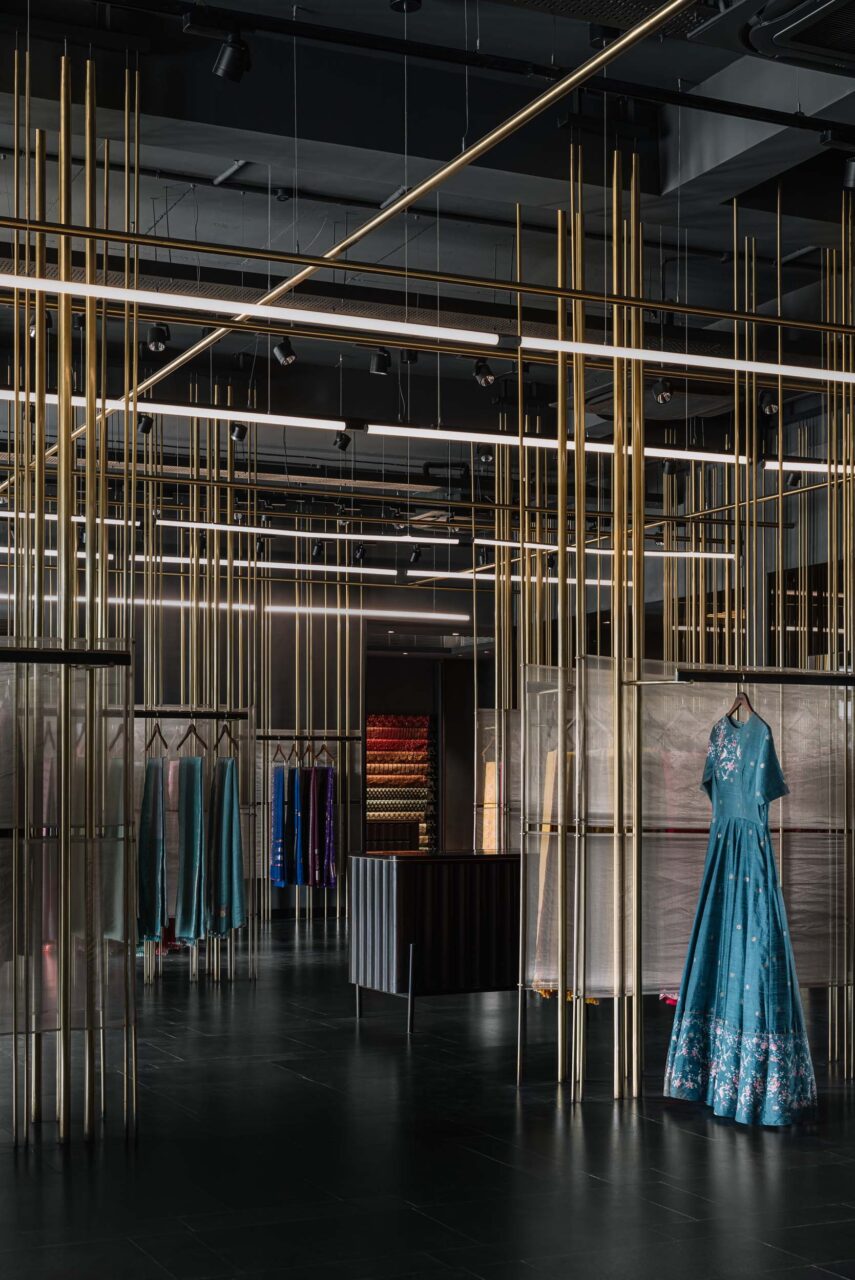
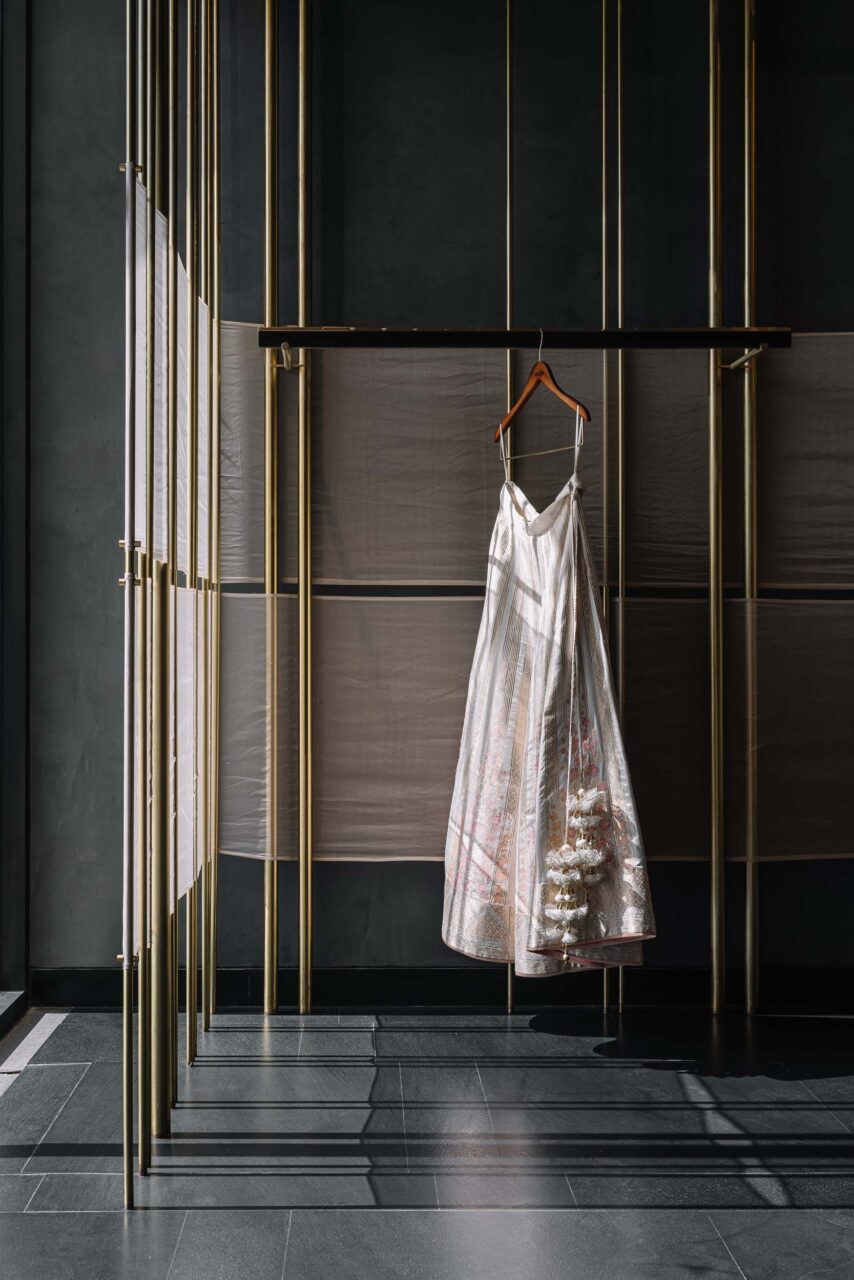
The pipes delicately stand out against the black-coated backdrop of the floor, walls, and ceiling. These pipes, although containing similar traits to what one might find in an art gallery, also divide the collections on display. Left of the entrance is the Thaan section, or the fabric section, exhibiting brightly colored fabrics while to the right is the ready-to-wear pieces. While primarily an open floorplan, the pipes have two layers of white, tissue-like fabric to better separate the sections and allow natural light to filter through them.
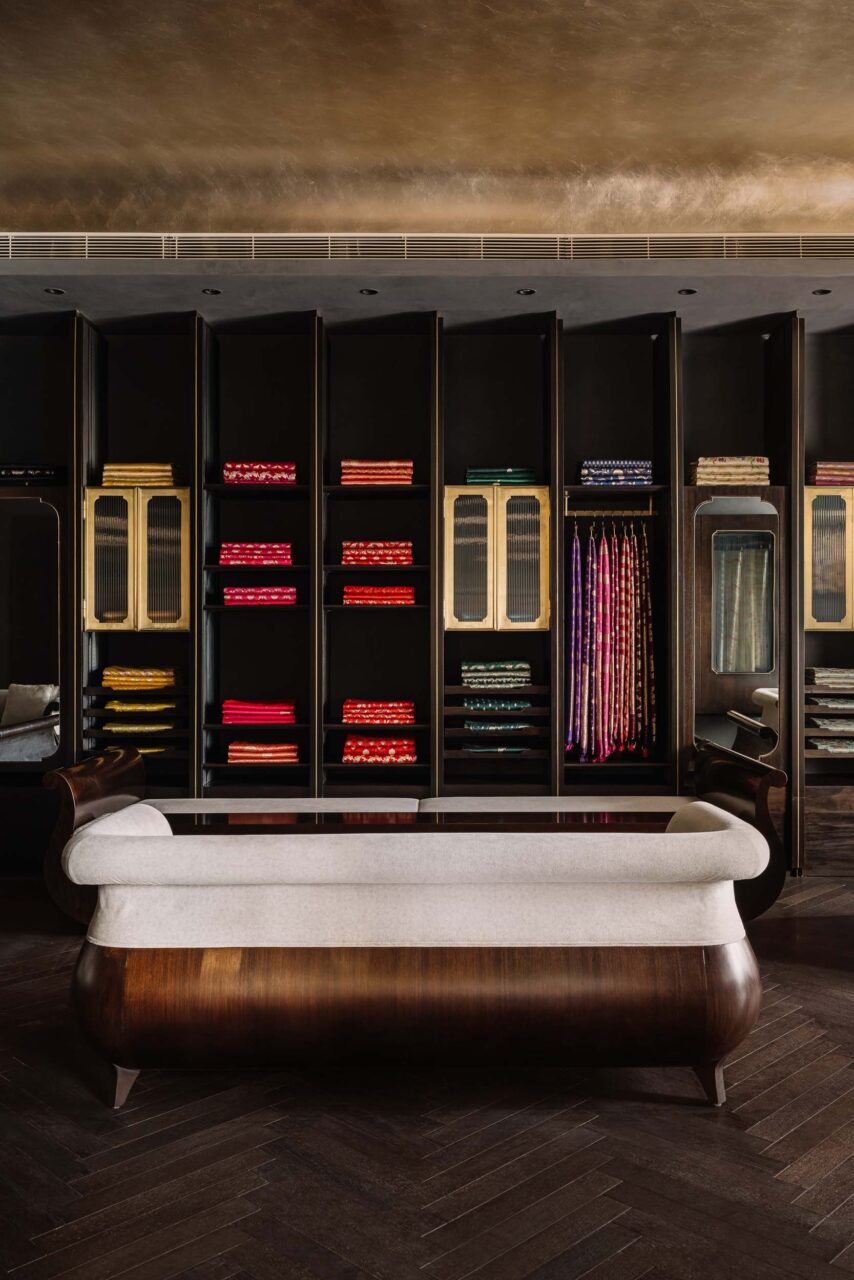
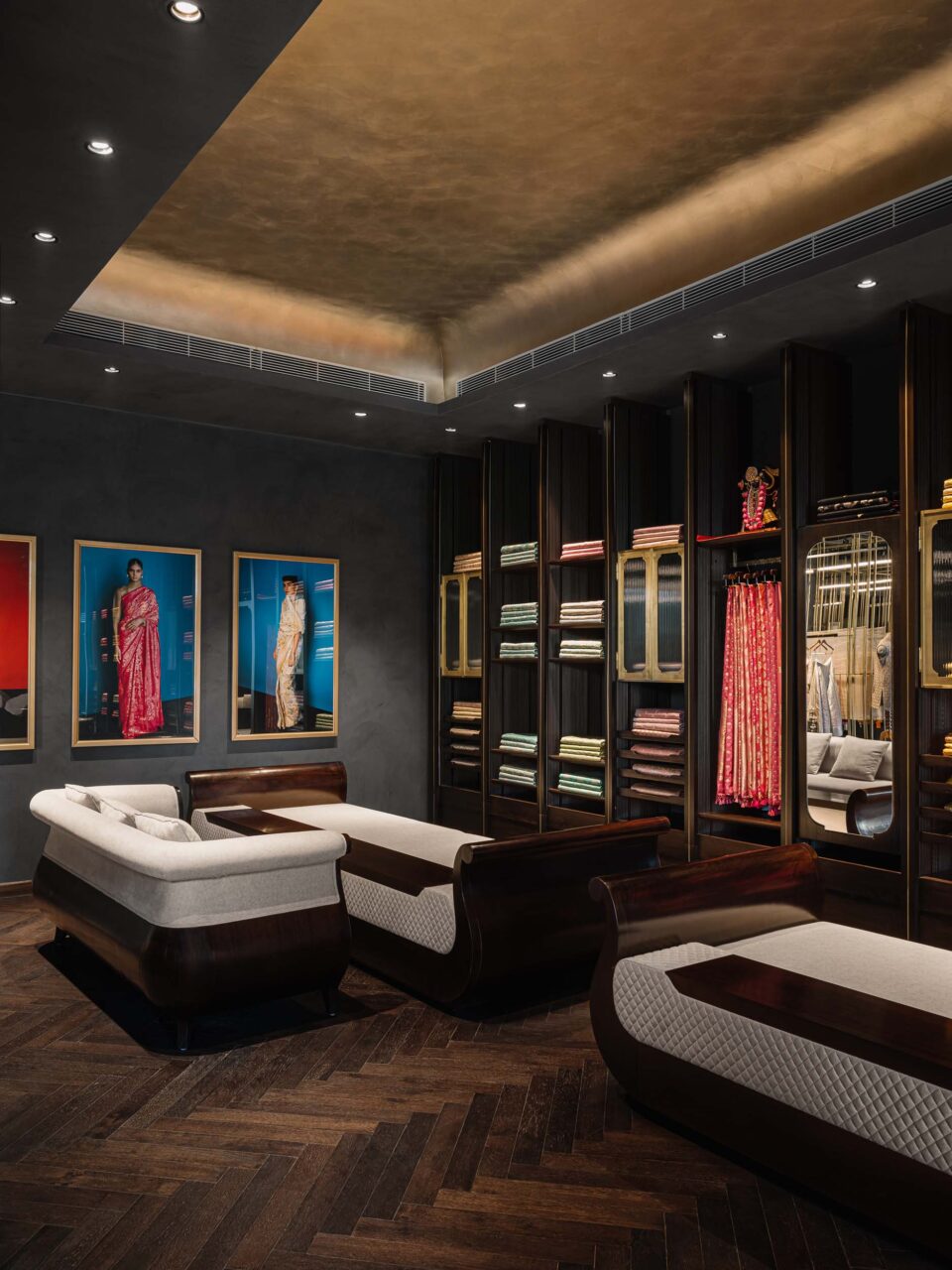

Toward the back of the store, five bridal rooms offer more privacy in the search for the perfect sarees. Small slivers of vertical windows incorporated in the back rooms offer natural light and act as a backlight to the saree displays. Traditional takkhat-style seating (or divan-style seating) is used in the rooms allowing guests to relax as they shop. One room in particular, coined “the classics,” dons bronze foiling along the indented ceiling, nodding to the metallic rods elsewhere in the store. Another bronze accent lies in the glass wall cabinetry, which offers a vintage touch in addition to the dark brown and wood herringbone-patterned floor.
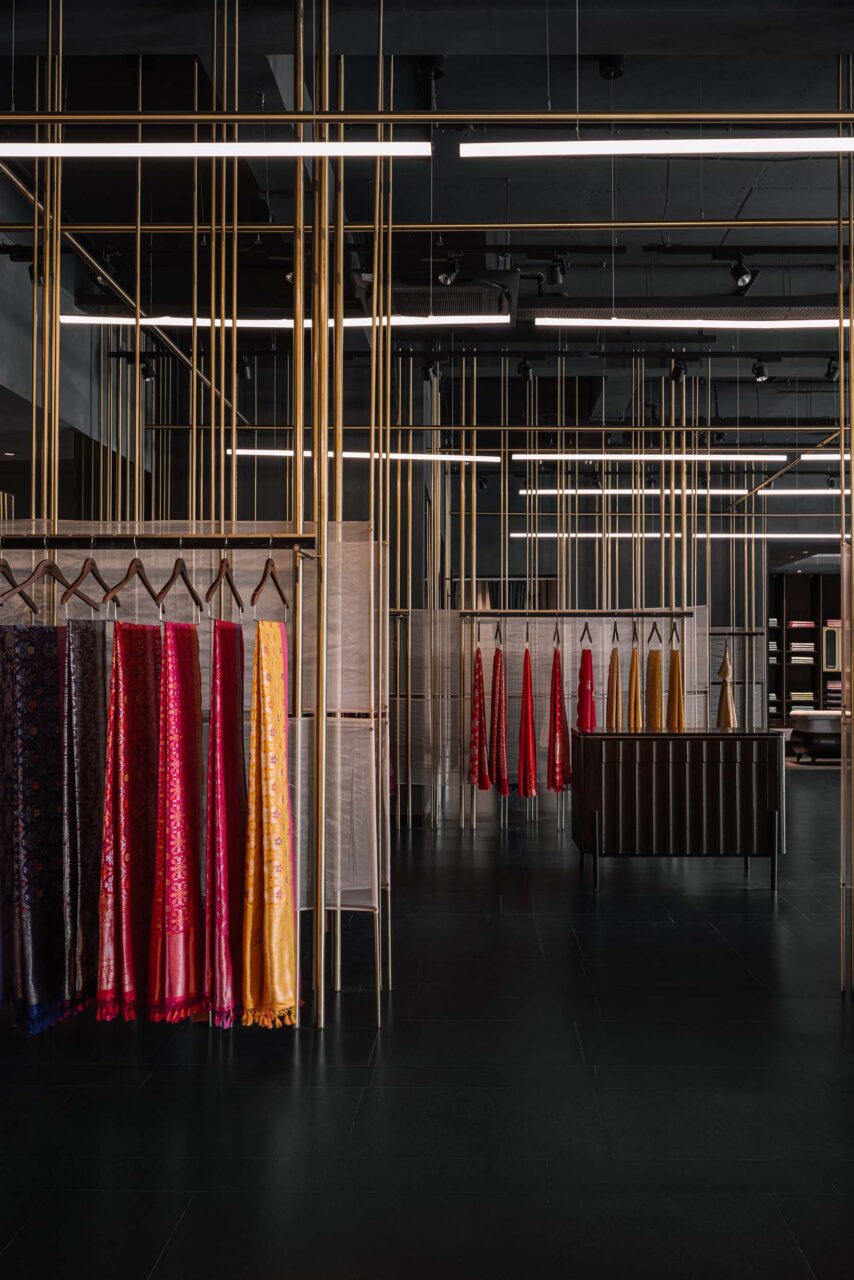

Studio Lotus commented on the design of the store stating, “The intervention deftly bridges the traditional and the modern, reflecting the evolving palettes of a new India, authentic to its roots, but distinctly contemporary.” The design creatively exhibits traditional weaving methods with modern application as seen with the use of the brass rods. The interactive three-dimensional textile and the beautifully crafted products by Ekaya make for an unforgettable shopping experience.
